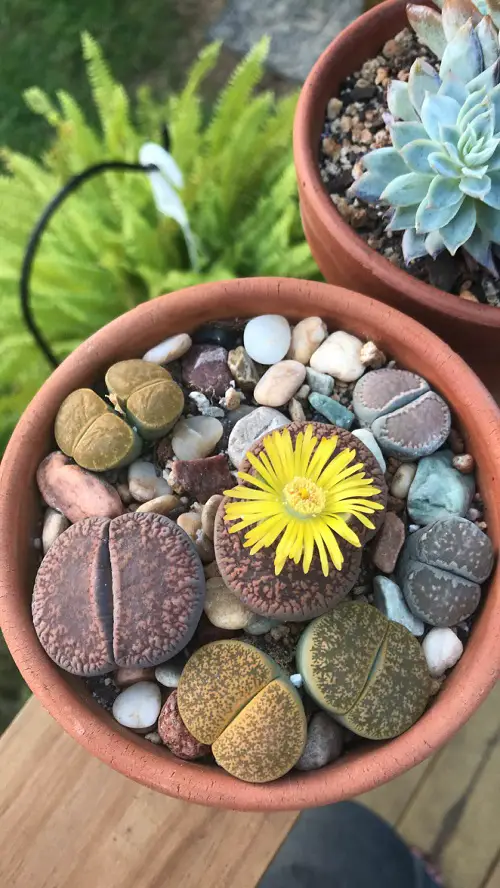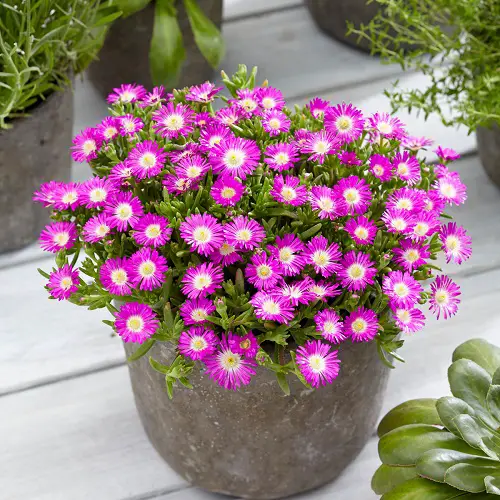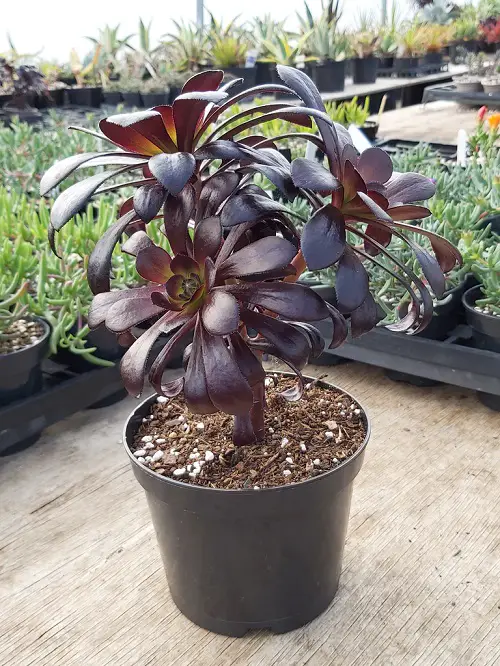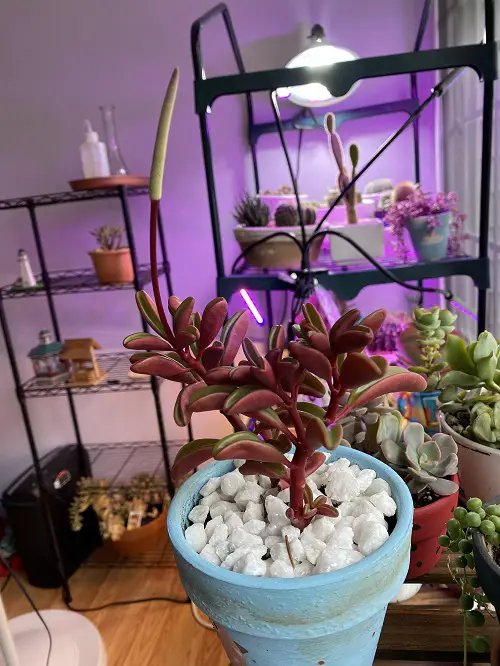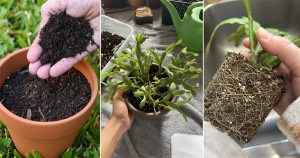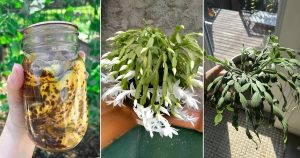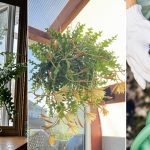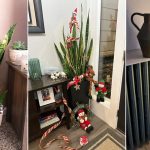Wanted to explore the hidden world of specimens? Then these Plants that are Succulent but You Never Knew would be the best to start with!
From living stones to cascading vines, here you will find some plants that you must have seen before or even adored their lush appearance but never knew they were succulents. Check them out!
Plants That Are Succulent but You Never Knew
1. Living Stones
Botanical Name: Lithops
William John Burchell, during his botanical tour in southern Africa, noticed a weird-looking plant very similar to brown stones. After examining it, he found that it was a succulent plant and named it Lithops. However, it is called by other names as well local Africans named it beeskloutjie (cattle hoof), perdeklou (horse’s hoof) or skaappootjie (sheep hoof).
Each plant has a body with two succulent leaves joined together which resembles lips, too; from this division, the flowers emerge. The leaves are thick and store water to sustain them in their native place. The plant lacks stems, and taproots are attached at the base of the leaves.
2. Rock Purslane
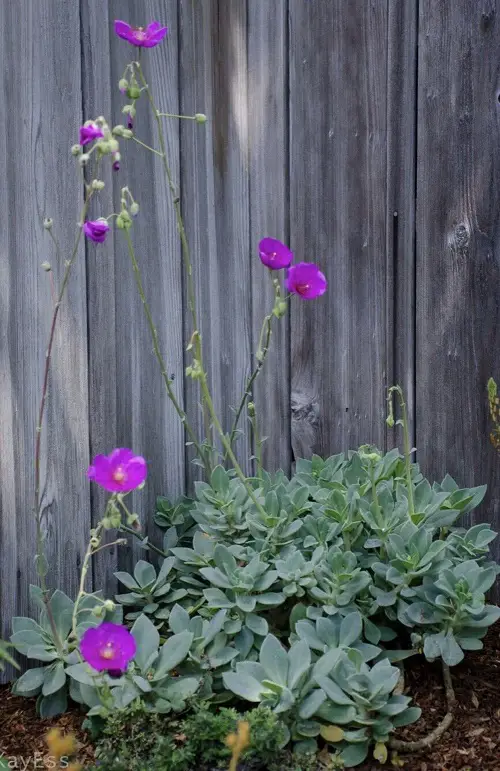
Botanical Name: Calandrinia grandiflora
Rock Purslanes will rock your garden with its slender stems, narrow, fleshy, blue-green pointed leaves, and bright magenta flowers. The foliage is evergreen with its purple flowers. It’s a moderate grower!
Favored and grown by the gardens due to their sturdiness and resilience against pests and diseases. Needs full to partial shade with good drainage soil and little water.
3. Ice Plant
Botanical Name: Delosperma cooperi
Ice Plant is a low-growing, carpet-forming succulent with soft, green leaves topped with blooms similar to daisies. This plant offers a long blooming phase, starting from summer and lasting till fall.
When planting it in your rock garden, spacing between the plants is necessary, at least 16-24 inches apart. It requires sandy soil and full sunlight. Avoid heavy soils without adequate drainage. If your region has deer, protect it by installing barriers.
4. Desert Rose
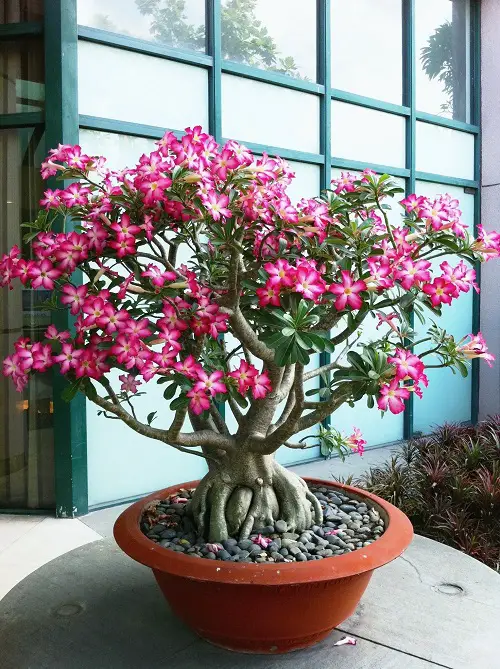
Botanical Name: Adenium arabicum
Do not get fooled by its tree-like appearance—the Desert rose is a succulent plant that will grab your attention with its short branches, similar to like a baobab tree, reaching up to 7. 3 inches long and 3.2 inches wide. Overall, the plant attains at least 16.4 feet in height.
You will see its bluish-green to shiny green leaves forming rosette on the ends of its branches, from which flowers emerge throughout spring and fall. While growing, it provides well-drained soil, good sunlight, and warm temperatures. And avoid sitting water; it would be better to irrigate it less than over! Be on the safer side!
5. Black Rose
Botanical Name: Aeonium arboreum ‘Zwartkop’
Native to Netherlands nurseries, this succulent is a cultivar of Aeonium arboreum. Despite its flowering plant appearance, this succulent has long bare branches, supporting its showy, rosette-shaped leaves, which are 8 inches in diameter.
On maturity, it bursts with yellow star-shaped blooms from the center of rosettes; after that, the branches die back to the stem. It thrives in the sun but shuns extreme heat and dryness, so a moist, shaded location would be ideal for Black Rose. Wet soil will lead to root rot!
6. Moss Rose
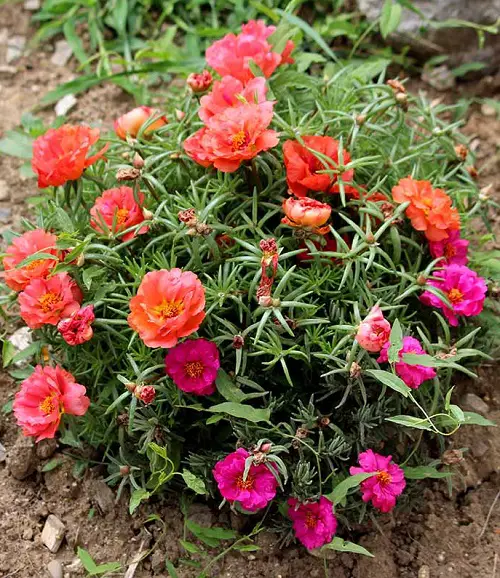
Botanical Name: Portulaca grandiflora
It is a semi-succulent that stores water in its fleshy leaves and stems. From the dry areas of Argentina and southern Brazil, it produces many colorful, showy, rose-like flowers throughout the summer.
Moss Rose grows low on the ground, spreading to about one foot and eight inches tall. It makes a good bedding plant! However, you can grow it indoors by planting tiny seeds in pots or containers. Interestingly, its seeds are edible and used as a food source.
7. Happy Bean Plant
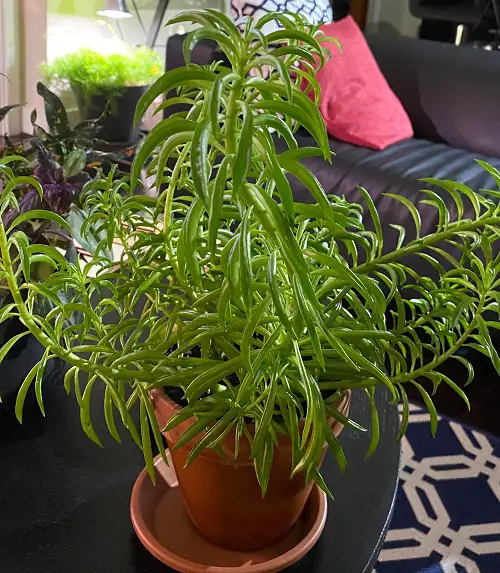
Botanical Name: Peperomia ferreyrae
This plant is an interesting specimen with distinctive looks for indoors. Happy Bean Plant has elongated bean-like leaves with grooves on the top. It is a compact succulent (12 inches) with a habit of growing upwards; you can see in the picture how its stem is taking a curve and growing upright. Quite interesting way!
As a houseplant, it acts as a good air purifier and is suitable for pots, dish gardens, or even terrariums. Keep it at a temperature between 65-75°F with moderate humidity.
8. Dinner Plate Aeonium
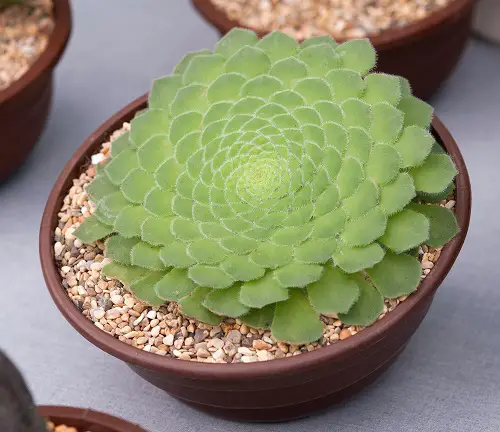
Botanical Name: Aeonium tabuliforme
When looked at from afar, it seems like a green cabbage is growing in your yard. But step closer to reveal the truth. It is a flat disc with closely tied rosette succulents with green, fleshy, rounded leaves with pointed ends. Each rosette grows around 18 inches in diameter and produces star-shaped, yellow blooms in late spring.
The plant becomes dormant in summer and requires minimal watering in hot and dry conditions. In fact, it can survive without water for extended periods. However, extreme heat may cause its leaves to curl to save water.
9. Ponytail Plant
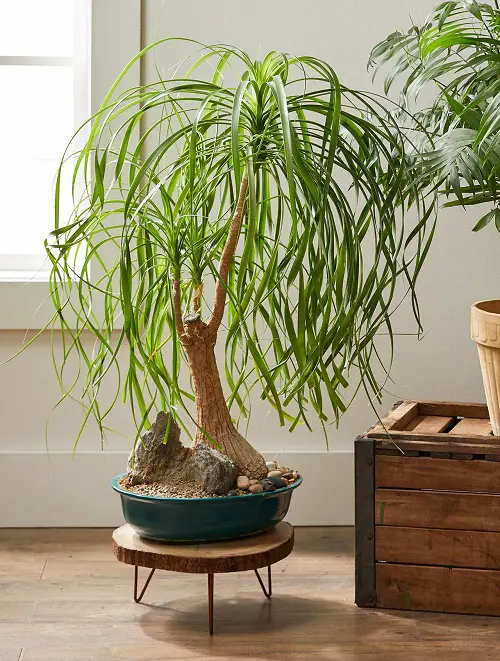
Botanical Name: Beaucarnea recurvata
Another specimen that often confuses people with its look is the ponytail Palm! Its large base or swollen trunk stores water, and evergreen, long, grass-like leaves give it a palm appearance, but it is succulent. Native to the regions of southeastern Mexico, it prefers zones 9-10 with dry and warm climates.
While it can reach about 30 feet tall in its natural habitat, it remains compact in containers as a houseplant. Be mindful of pests like mealybugs and scale, and avoid overwatering and excessive fertilization. Provide full sun and a well-draining soil mix to keep your plant healthy!
10. Cobweb Spiderwort
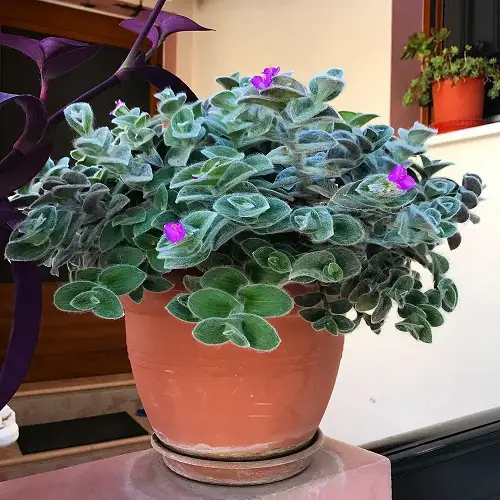
Botanical Name: Tradescantia sillamontana
Another hard-to-tell succulent plant is Cobweb Spiderwort. It is an easy-to-grow, slow-growing perennial found in dry areas of Mexico. However, it is an annual in cooler USDA zones. It can be identified by its geometric-shaped leaves with hairs, shoots, buds, and zigzag thick stems.
Flourish amazingly in containers with more sun and less watering needs. They don’t need to be watered daily, only when the topsoil is dry, and it’s important to let the soil dry out between each irrigation. Overwatering and prolonged exposure to shade areas may affect your plants’ attractive appearance.
Pro Tip: Pinching off the tips will give the plant a bushier look. By avoiding this, you can train the plant to trail.
11. Madagascar Ocotillo
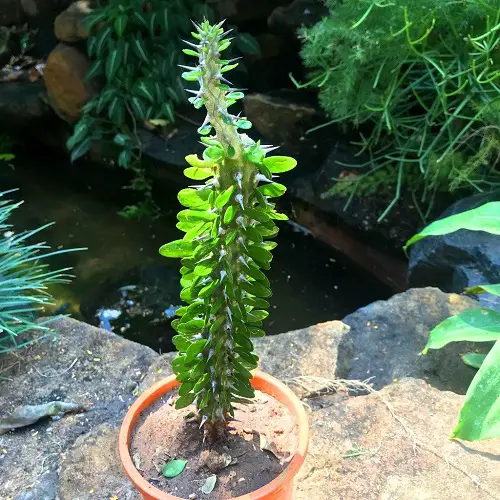
Botanical Name: Alluaudia procera
It is a unique deciduous, succulent plant that thrives in USDA zones 9-11. Gardeners prefer it for its textural accent and unique way of growing. Known for its sprawling habit, the old stem is dominated by a new one, and it attains a height of 30 feet tall with a tree-like appearance.
Madagascar Ocotillo produces cluster of blooms at the end of February and continues until March and occasionally in September. It doesn’t require pruning and can be kept minimal if you want. This succulent can flourish well in full-sun areas with fast-draining soil and needs to be irrigated regularly, particularly in summer.
12. Silver Shamrock
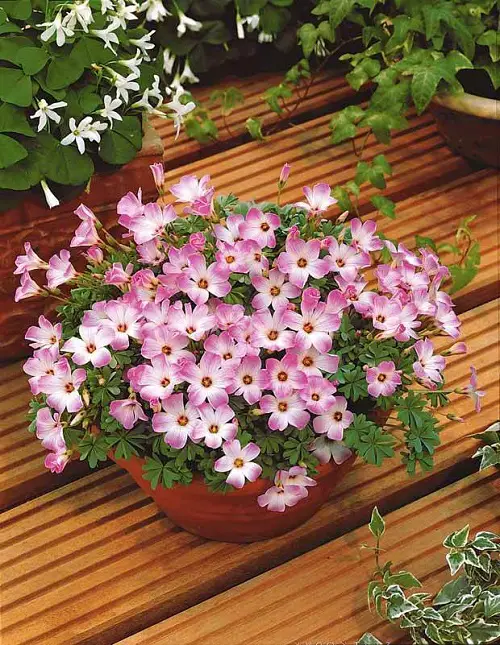
Botanical Name: Oxalis adenophylla
Native to Chile and Argentina and is toxic to pets, so grow it with care in your home. Silver Shamrock is a bulbous perennial plant with grey-green leaves and heart-shaped leaflets, growing in clusters and often getting covered with open faces of white flowers with purple tips.
It thrives easily in rock gardens, containers, or borders. However, propagation should be done by seeds in the daytime during late winter or early spring.
13. Ruby Glow
Botanical Name: Peperomia graveolens
Ruby Glow is a rare plant in the Ecuadorian forest. Thrives in the understory of the Andes with its striking fleshy, V-shaped leaves, which are green on the top and ruby red on the undersides.
Its foliage helps it survive in dry native regions by storing water. It grows about 10 inches tall and wide. However, it remains compact indoors, perfect for those looking to add it in small spaces or containers. Also, it is low maintenance and safe to introduce in a home with children and pets.

